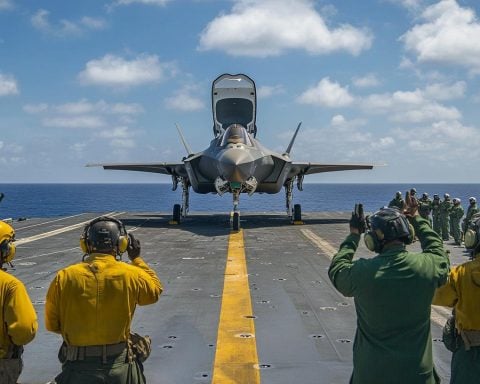The Brazilian Air Force recently experienced a dramatic incident involving one of its valued fighter jets. An F-5EM Tiger II jet met its end during a training exercise when it crashed while making its return to Natal Air Base, situated close to the city of Parnamirim in Rio Grande do Norte. Sources suggest the unfortunate event unfolded due to a suspected engine failure, although comprehensive investigations are underway to affirm this theory.
The proactive maneuvering by the pilot was crucial in averting a larger catastrophe. Before ejecting to safety, the pilot expertly guided the aircraft away from populated zones, ensuring no civilian harm. The jet eventually crashed in a secluded wooded area, leading to a significant fire that annihilated the aircraft.
Despite the loss, the F-5EM continues to represent a significant part of Brazil’s aerial capabilities. Originally acquired in the 1970s, these fighters have undergone various upgrades to extend their operational utility. Equipped with advanced radar systems and modern weaponry, the F-5EM has been a versatile platform for multiple mission profiles.
Though the advent of the Swedish Saab JAS 39E/F Gripen signals a shift in Brazil’s air force strategy, the F-5EM is expected to remain active until 2030, serving pivotal roles in training and reserves. As Brazil slowly transitions to more advanced fighters, the F-5EM’s legacy will continue to be a testament to its adaptability and strategic value in the nation’s air defense operations.
The Hidden Impact of Military Aircraft Accidents on Local Communities and Economies
The recent crash of a Brazilian Air Force F-5EM Tiger II fighter jet has brought to light several crucial aspects that often go unnoticed in military aviation incidents. While the primary focus usually remains on the technical and strategic implications, this event highlights the broader impact on communities and economies in proximity to military bases.
How Do Military Crashes Affect Local Communities?
Though the F-5EM crash near Natal Air Base thankfully resulted in no civilian casualties, such incidents can still profoundly affect nearby localities. The mere occurrence of a crash can trigger fear and anxiety among residents, especially if they live close to flight paths. These events often lead to a temporary disruption in daily life—such as emergency road closures, smoke affecting air quality, and the mobilization of emergency services.
Moreover, the psychological impact of potential danger should not be underestimated. Communities living near military bases frequently face anxieties about safety, knowing they are in potential accident zones.
Economic Implications of Jet Crashes
The economic toll of a fighter jet crash is also significant. Beyond the direct loss of the aircraft, which represents millions of dollars, there are broader economic ramifications. Air Force Magazine discusses how such incidents might prompt stricter regulations and operational pauses, leading to training delays. These measures, while necessary for safety, have the potential to hinder military readiness and efficiency.
Additionally, if a crash results in environmental damage, such as fires or fuel spills into local ecosystems, clean-up efforts can be costly and time-consuming. These costs are often borne by taxpayers, further underlying the economic ripple effect of such incidents.
Why Are Older Jets Still in Use?
One might wonder why older jets, like the F-5EM, are still part of active military fleets. The simple answer is budget constraints and the strategic allocation of resources. Upgrading military arsenals is an expensive and complex process, and nations like Brazil often have to balance modernization with the ongoing utility of existing assets.
The F-5EM jets, despite being relics of the 1970s, have undergone continuous upgrades to extend their service life. They serve as a cost-effective solution for training and reserve missions until more advanced aircraft like the Saab JAS 39E/F Gripen become fully operational in larger numbers.
Are There Controversies Surrounding Military Modernization?
Indeed, the decision to phase out older models like the F-5EM brings about debates. While some argue for rapid modernization to bolster national defense, others point out the financial and logistical burdens involved. This dilemma is particularly pronounced in developing countries, where military budgets must compete with pressing societal needs.
Moreover, transitions to modern fleets like the Gripen often involve international partnerships and dealings that can be highly scrutinized. Defense News covers such international procurement and strategy discussions, highlighting both the geopolitical and economic aspects of military modernization.
Ultimately, the crash of the F-5EM fighter jet serves as a poignant reminder of the interconnectedness between military operations and civilian life. It underscores the necessity for transparent policy-making, community engagement, and balanced economic strategies in military planning.



















